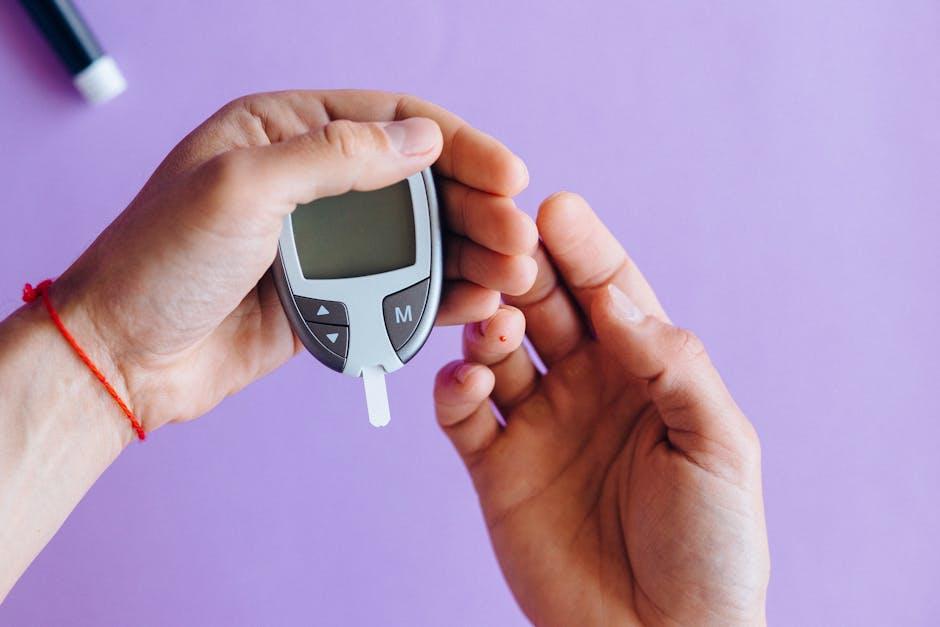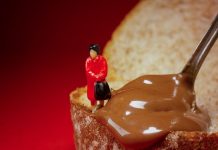In the intricate dance of human health, maintaining balanced blood sugar levels is akin to mastering a delicate choreography. Just as a skilled dancer navigates the stage with precision and grace, so too must we manage our body’s internal rhythms to ensure harmony and vitality. In a world where the hustle and bustle often leads us astray, understanding practical ways to manage blood sugar becomes not just a necessity but an art form. This article delves into a symphony of strategies, blending science with everyday wisdom, to empower you on your journey toward equilibrium. Whether you’re navigating the peaks and valleys of diabetes or simply seeking to optimize your well-being, these insights offer a path to sustained health and energy.
Balancing Act: The Role of Diet in Blood Sugar Control
Maintaining a balanced diet is crucial in the intricate dance of managing blood sugar levels. While it might seem daunting, incorporating specific dietary practices can make a significant difference. Start by focusing on whole, unprocessed foods. These not only stabilize blood sugar but also provide essential nutrients. Think colorful vegetables, whole grains, and lean proteins. Furthermore, embracing a routine of smaller, more frequent meals can help prevent drastic spikes and dips in blood sugar.
- Fiber-rich foods: Incorporate legumes, whole grains, and vegetables to slow the absorption of sugar.
- Healthy fats: Avocados, nuts, and seeds can help maintain satiety and regulate blood sugar levels.
- Portion control: Keep an eye on serving sizes to avoid overconsumption.
Remember, the goal is to create a sustainable and enjoyable eating plan that keeps blood sugar levels in check without feeling restrictive. By experimenting with different foods and listening to your body’s responses, you can find a harmonious balance that supports your health journey.
Exercise Your Options: Physical Activity for Stable Glucose Levels
Integrating regular physical activity into your daily routine can be a powerful ally in maintaining stable glucose levels. Not only does exercise help your body utilize insulin more efficiently, but it also aids in burning excess sugar in your bloodstream. Here are some effective ways to get moving:
- Walking: A simple walk after meals can significantly help in lowering blood sugar spikes.
- Strength Training: Incorporate resistance exercises to build muscle mass, which improves glucose uptake.
- Yoga: Engage in yoga sessions to enhance insulin sensitivity and reduce stress levels.
- High-Intensity Interval Training (HIIT): Short bursts of intense exercise followed by rest periods can improve insulin function.
Find activities that you enjoy and fit them into your lifestyle. Whether it’s dancing, swimming, or cycling, the key is consistency and making movement a natural part of your day.

Mindful Monitoring: Techniques for Tracking Blood Sugar Fluctuations
Maintaining balanced blood sugar levels is essential for overall health and well-being, and mindful monitoring plays a crucial role in this process. One effective technique is to establish a regular schedule for checking your blood sugar, which helps in identifying patterns and potential triggers. Consider using a combination of traditional glucometers and continuous glucose monitors (CGMs) for a more comprehensive view. Smartphone apps can be invaluable tools, offering features like data logging, trend analysis, and even personalized insights.
- Journaling: Keep a detailed journal of your meals, physical activities, and stress levels. This will help in correlating lifestyle factors with blood sugar fluctuations.
- Mindful Eating: Pay attention to portion sizes and the nutritional content of your meals. Practicing mindful eating can reduce post-meal spikes.
- Stress Management: Techniques such as meditation, yoga, and deep-breathing exercises can help in reducing stress-induced blood sugar fluctuations.
- Regular Check-ins: Schedule regular appointments with healthcare professionals to discuss your monitoring results and adjust your management plan as necessary.
By integrating these mindful monitoring techniques into your daily routine, you can gain better control over your blood sugar levels, leading to improved health outcomes.

Stress Less: The Impact of Relaxation on Blood Sugar Management
Incorporating relaxation techniques into your daily routine can play a significant role in managing blood sugar levels. Stress can lead to the release of hormones like cortisol and adrenaline, which can elevate blood sugar levels. Embracing relaxation not only helps to mitigate these effects but also supports overall well-being. Here are some practical ways to integrate relaxation into your lifestyle:
- Meditation: Just a few minutes of meditation each day can help lower stress levels. Consider using guided meditation apps or practicing mindfulness techniques to calm your mind.
- Deep Breathing: Engage in deep breathing exercises to reduce anxiety and lower stress hormones. Try the 4-7-8 technique: inhale for four seconds, hold for seven, and exhale for eight.
- Yoga: Incorporating yoga into your routine can enhance both mental and physical relaxation, contributing to better blood sugar control.
- Nature Walks: Spending time in nature can have a soothing effect on the mind and body, promoting relaxation and helping regulate blood sugar.
- Creative Activities: Engaging in activities like painting, drawing, or playing music can be a form of therapy that reduces stress and enhances mood.
By prioritizing relaxation, you can create a positive impact on your blood sugar management journey. Integrating these practices into your daily routine can lead to a healthier and more balanced lifestyle.
The Conclusion
managing blood sugar levels is an ongoing journey that blends science, mindfulness, and daily habits. By embracing practical strategies, from mindful eating and regular exercise to consistent monitoring and stress management, you can navigate the complexities of blood sugar regulation with confidence and ease. Remember, every small step is a victory, contributing to a larger tapestry of well-being. As you continue on this path, let knowledge empower you and adaptability guide you, ensuring that your efforts are both sustainable and rewarding. Here’s to a balanced life, where informed choices lead to vibrant health and resilience.

































